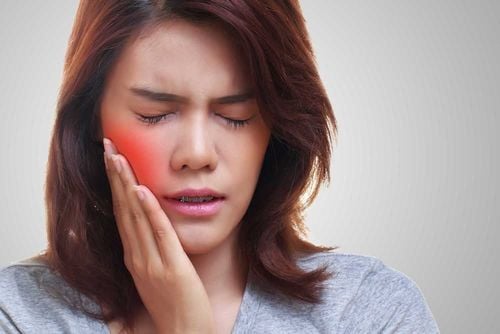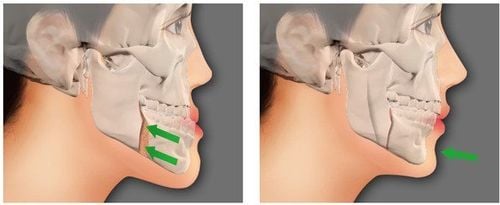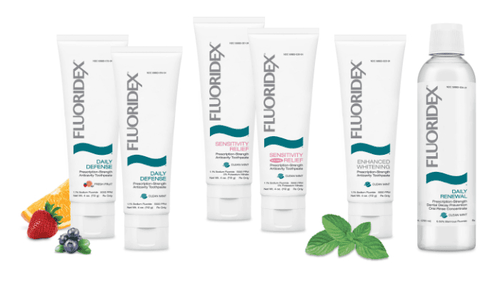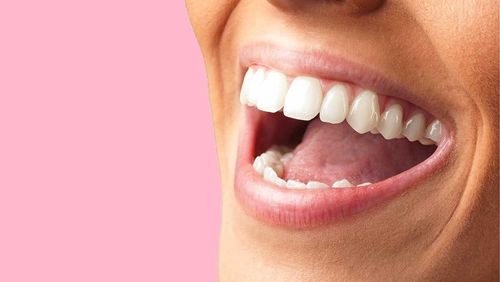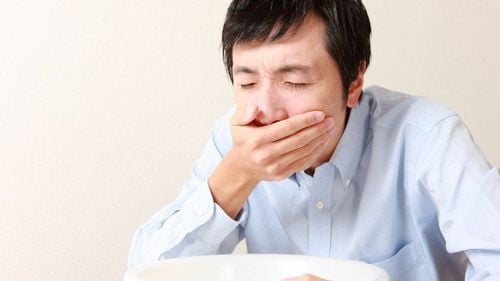This is an automatically translated article.
If you are looking to whiten your teeth naturally, you can choose from several methods that can be done at home. So is there a way to whiten yellow teeth at home and should teeth whitening at home? The following article will help you know how to whiten teeth at home safely and effectively.
1. Causes of yellow teeth
About 18% of people said they often hide their teeth in photos, many people often feel embarrassed about the yellow color of their teeth. Having beautiful teeth is very important in our lives today. Before learning how to whiten your teeth, you should know the reason why your teeth have become yellow. Here are some of the most common causes of yellow teeth.
1.1 Stains If you eat certain foods or drink beverages like cola, wine or coffee, your teeth may become more yellow. Likewise, smoking can lead to yellowing of teeth, as can taking certain antibiotics or antihistamines.
The use of mouthwashes containing chlorhexidine and cetylpyridinium chloride has also been linked to teeth staining.
1.2 Thinner Enamel Enamel is the outermost layer of teeth and also the whitest layer. As we age, this hard surface tends to wear down and reveal darker layers underneath it. Eating a lot of highly acidic processed foods, like soft drinks or sodas, candies or sometimes some fruits, and even some supplements can worsen enamel thinning. due to their acidic content.
In addition, some people have genetic factors with teeth with thin enamel.
1.3 Poor oral hygiene It is obvious that if you don't brush and floss every day, you will get yellow teeth. Even if you have mastered at-home teeth whitening, you still need to practice proper oral hygiene, otherwise you will suffer negative consequences such as gum disease, tooth decay.
1.4 Medical Condition There are a number of diseases that can damage tooth enamel such as dry mouth (since lack of saliva means less protection for enamel), mouth breathing and blocked nasal passages. These conditions reduce the amount of saliva and prevent the teeth or oral cavity from being disinfected.
Furthermore, some treatments such as chemotherapy can also cause yellowing or discoloration of teeth.
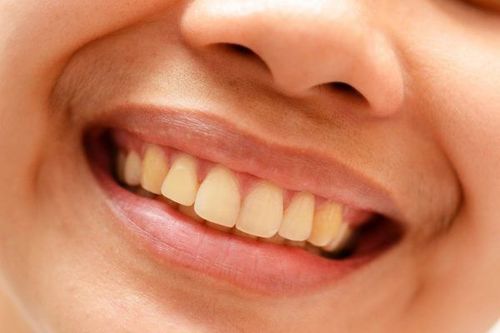
Một số tình trạng bệnh có thể khiến răng bạn bị ố và cần làm trắng răng tại nhà
2. Home remedies to whiten teeth
2.1 Enhance your brushing habits First and foremost, brush your teeth at least twice a day and for a minimum of two minutes each time. Not only will this prevent yellowing, but it may even provide some whitening effects.All toothpastes remove surface stains because they contain mild abrasives. Some whitening toothpastes contain gentle chemicals or polishes that provide additional stain removal effects.
If you want to take your whites up a notch you need to make a paste from baking soda and hydrogen peroxide, which are two compounds that can remove both plaque and bacteria, and also help remove stains. dirty.
Here's how:
Mix 1 teaspoon of baking soda with half a teaspoon of 3% hydrogen peroxide until it forms a paste. Brush like you would with regular toothpaste. Rinse mouth with water. after each brush You can also make a mouthwash by adding at least 60ml of water to the mixture. Keep it in your mouth for 2-4 minutes and then spit it out. Another natural teeth whitening method is activated charcoal, which is said to remove pigments and stains from your teeth. Activated charcoal is highly absorbent, which can eliminate bacteria and toxins in your mouth.
To include activated charcoal in your brushing regimen, you will need activated charcoal capsules. Open a capsule and apply it directly to your toothbrush. Brush gently in small circles and try to avoid your gums, as the charcoal can be more or less abrasive to your gums.
Between the two methods, brushing with activated charcoal is more risky. Despite its teeth-whitening properties, this technique is thought to be able to damage tooth structure and even cause yellowing in the long run.
Brushing with baking soda and hydrogen peroxide is considered a safer and more effective teeth whitening method. According to one study, you can see results in as little as 6 weeks.
2.2 Using apple cider vinegar and some fruit peels on teeth Apple cider vinegar (ACV), which works effectively as a natural antibiotic and especially as a tooth cleaner, can also remove Remove stubborn stains on teeth. ACV is especially useful for removing stains caused by common culprits like coffee and nicotine (smoking).
ACV contains compounds, including acetic acid, potassium, magnesium, probiotics and enzymes, that kill germs and promote the growth of beneficial “good” probiotic bacteria. Since it is naturally acidic, it helps break down plaque or other substances on the teeth. The pH of apple cider vinegar can remove stains on teeth, helping to whiten teeth naturally.
The important thing when using ACV to whiten teeth is to be persistent, use it for at least a month continuously to see the best results. Be careful, though, because with all acids, it can remove the enamel on your teeth if you brush too hard or use too much. After brushing your teeth with ACV, you need to brush again with regular toothpaste, preferably one without fluoride, or rinse your mouth clean.
Apply apple cider vinegar to your fingers and rub it on your teeth for about a minute. Then, rinse your mouth with water or a hydrogen peroxide mouthwash.
Similar to apple cider vinegar, some people claim that using citrus fruits - including lemons, orange peels, or lemon essential oil, which contain beneficial acids - also works to whiten teeth. These foods are generally healthy, for example, beneficial for digestion by regulating the level of acidity in the stomach, but their high acidity can eventually wear down tooth enamel if consumed in excess. Like using apple cider vinegar, if you use lemon or orange peel on your teeth, be sure to always rinse your mouth afterwards. Use the hydrogen peroxide mouthwash recipe described above for best results.
2.3 Over-the-counter whitening gels and patches A whitening gel is a clear, peroxide-based gel that is applied with a small brush directly to the surface of your teeth. Instructions vary depending on the strength of the peroxide. Follow the instructions on the product exactly. Initial results are seen in a few days and final results last about 4 months.
Whitening patches are very thin, barely visible strips coated with a peroxide-based whitening gel. The strips must be glued according to the instructions on the label. Initial results are seen in a few days and final results last about 4 months.
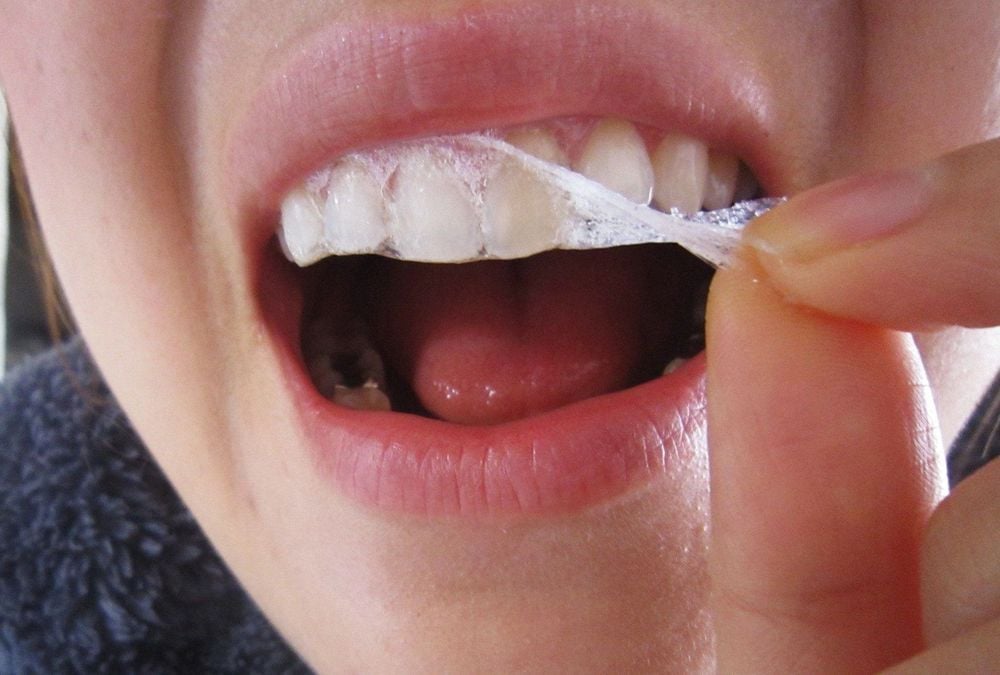
Miếng dán và gel là một trong các cách làm trắng răng tại nhà
2.4 Lifestyle changes If your teeth are getting yellower, it might be time to reevaluate your lifestyle habits. Drink less coffee or alcohol; quit smoking; Eat less acidic foods.
Sometimes, learning how to whiten teeth means learning how to prevent the causes of discoloration or thinning of enamel.
2.5 Drinking through a straw In other words this is a method of preventing teeth from yellowing. Drinking through a straw is capable of protecting your teeth against some kind of impact or contact.
Of course, this method can also be wasteful due to the use of disposable straws. You may want to consider using reusable straws.
2.6. Try Oil Pulling Although not recommended by the American Dental Association, some people use oil pulling as a natural teeth-whitening technique. So what exactly is towing oil? That's when you rinse your mouth with coconut oil, sunflower oil, or sesame oil after brushing and flossing. Gargle for about a minute and then spit out the oil as you would a regular gargle.
2.7. Practice Proper Oral Hygiene Maintaining proper oral hygiene is the best way to prevent yellowing and discoloration. You need to follow these steps:
Brush twice a day, for at least two minutes each time Floss twice a day to remove plaque between teeth Use a toothpaste containing fluoride, which is claimed to have can fight tooth decay Rinse your mouth with a mouthwash recommended by your dentist once a day
3. Is natural teeth whitening harmful to your teeth?
One thing to keep in mind when it comes to teeth whitening is that some natural whiteners can remove enamel.
To avoid over-doing with teeth whitening methods, start slowly, use only a small amount of any product, follow directions, and watch for signs of worsening sensitivity. worse.
Teeth whitening products can damage teeth by removing too much enamel. Continuous use of whitening strips has been shown to cause wear and negative effects on oral health, so whitening in this way should be limited.
Conventional whitening strips and other whitening products, contain a gel with the active ingredient carbamide peroxide, which breaks down into hydrogen peroxide and a waste product called urea. Continuous use of whitening strips has been shown to wear down enamel over time and also cause tooth sensitivity, especially when eating hot and cold liquids or acidic foods.
Teeth whitening strips should be used in moderation, ideally after you've tried natural methods to take better care of your teeth.
Teeth whitening products should only be used under the guidance of a dentist. Remember that whitening treatments can have temporary but not long-lasting effects. The best way to whiten teeth is to provide your body with plenty of healthy foods, and brush and wash your teeth and gums every day. Also limit coffee, tea and sugary foods in your diet.

Bạn nên được nha sĩ hướng dẫn về các cách làm trắng răng tại nhà
4. Cases in which the teeth whitening process should not be applied
Some cases should not apply teeth whitening procedures include:
Age and pregnancy problems. Teeth whitening is not recommended in children under 16 years of age. Teeth whitening during this age can irritate the pulp or make it sensitive. Teeth whitening is also not recommended in pregnant or nursing women. Sensitive teeth and allergies. People with sensitive teeth and gums, receding gums or defective restorations should consult their dentist before using the teeth whitening system. Anyone who is allergic to peroxide (whitener) should not use bleaching products. Gum disease, enamel wear, tooth decay and exposed roots. People with gum disease or tooth enamel wear are generally discouraged from having teeth whitening procedures. Cavities need to be treated before any whitening procedure is performed. This is because teeth whitening solutions penetrate any existing cavities and inner areas of the tooth, which can cause sensitivity. In addition, the bleaching process will not work on exposed roots, because the roots do not have enamel. Dental restorations: Colored fillings and plastic composite materials used in dental restorations (crowns, porcelain teeth, braces, bridges) are not applicable for teeth whitening. As a result, using a whitener on teeth that contain restorations will result in uneven whitening - in this case, making the non-prosthetic teeth appear lighter than the teeth with restorations. Any whitening procedure must be performed prior to the restoration. Dark teeth. Yellow teeth respond well to bleaching, brown teeth respond less well, and gray or purple teeth may not respond to bleaching. The bluish gray on teeth caused by tetracycline antibiotics is more difficult to lighten and can take up to six months of treatment for successful lightening. Dental - Jaw - Facial - Vinmec International General Hospital specializes in examining and treating all common dental problems in adults and children. The hospital has a team of qualified doctors and dentists and a system of advanced machinery to help support the examination process well and shorten the time.
Therefore, when there is any problem, you can go to the hospital to be checked for appropriate instructions from a specialist doctor. Avoiding leaving for a long time will affect the structure and aesthetics of the teeth.
Please dial HOTLINE for more information or register for an appointment HERE. Download MyVinmec app to make appointments faster and to manage your bookings easily.
Reference source: webmd.com



